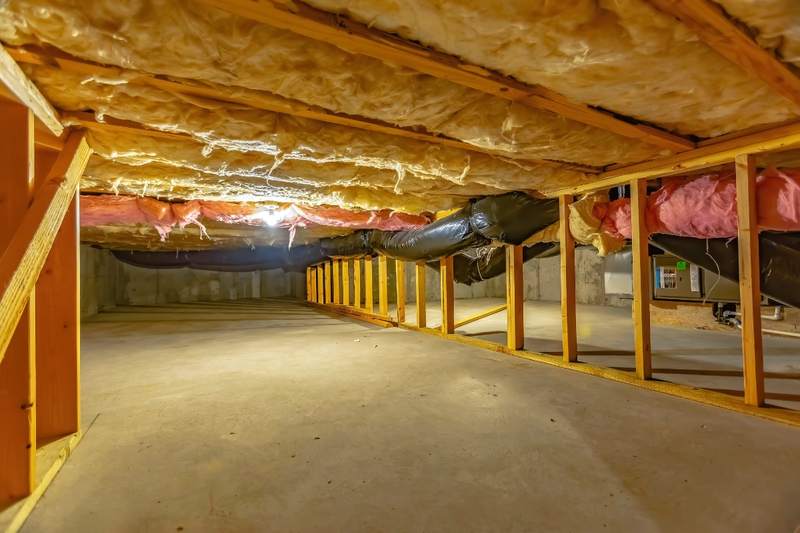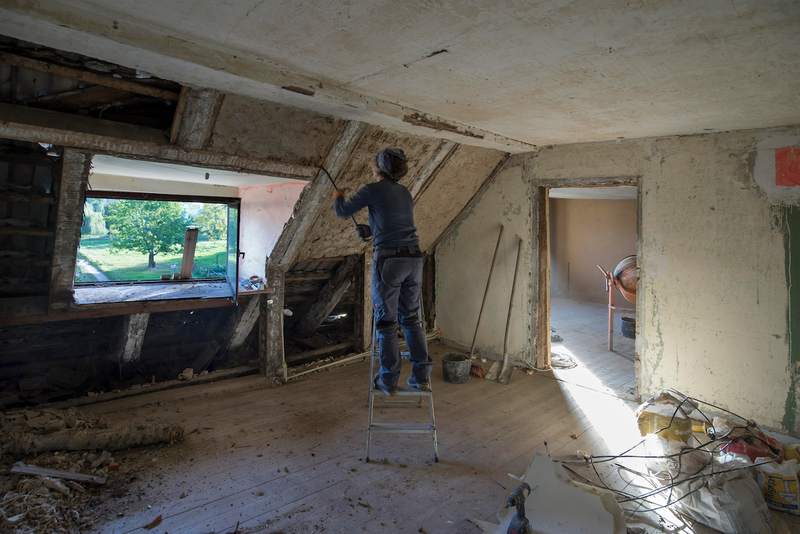
Buying a new-construction home requires additional considerations and costs, but it’s attainable if you are financially prepared and know what to expect. Check out our guide to purchasing a new-construction home.
Step-by-Step Guide to Buying a New-Construction Home
If you’ve decided that a new-construction home is right for you, here’s what you can do to purchase one of your own.
1. Choose a location
The first thing you need to figure out is where you want to live. Do you have a specific area in mind, or are you more focused on the type of home? Consider factors like your proximity to loved ones, the length of your commute, and local schools.
Once you’ve zeroed in on a neighborhood, you can begin browsing new-construction homes in the area. If you’re planning to get involved prior to the construction, you can start looking at new developments and empty lots.
2. Hire a real estate agent
The next step is to hire a real estate agent who will become an important teammate as you navigate the homebuying process. You should be able to rely on your agent’s experience and expertise to help answer all your questions, act in your best interest, and advocate on your behalf.
3. Get preapproved and look into financing
It’s time to think about how you’re going to finance your home purchase.
You can start by getting mortgage preapproval, which is a letter from a lender that indicates how much it’s willing to lend to you, up to a certain amount. While preapproval shouldn’t be confused with a final loan offer, it should give you a rough idea of how much you’ll be able to borrow.
You also need to think about which type of loan makes the most sense for your financial situation and plans. Here are some potential choices:
- Construction loan. A construction loan covers the cost of building or rehabilitating a home. There’s typically a waiting period of six to 24 months before you’ll need to start making payments. Once the home is built, you’ll have the option of refinancing to a conventional loan.
- Owner-builder loan. This is a construction loan for borrowers who are both the builder and the future homeowner. However, you’ll need to provide evidence that you are in fact an experienced builder, so you don’t pose too much risk to the lender.
- Conventional loan. Conventional loans are the most common mortgage type and aren’t insured by any government agency.
- Jumbo loan. A jumbo loan is a mortgage for an amount that exceeds the limits set by the Federal Housing Finance Agency. For 2023, the conforming loan limit is $726,200 in most areas and $1,089,300 in certain high-cost areas.
- Government-insured loan. These loans are backed by government agencies — like the Federal Housing Administration, Veterans Affairs, and the Department of Agriculture — and are geared toward making homeownership more affordable for qualified borrowers.
- Bridge loan. A bridge loan allows you to purchase a new-construction home while you’re still working to sell your last home as it provides cash flow in the interim.
4. Research and choose a builder
If you’re planning to construct a home, then it’s important to find the right builder. An experienced builder who receives great reviews is more likely to do a good job, stay on schedule, and avoid costly problems. You can ask real estate agents, friends, and family for referrals and look online to see samples of their work.
Be sure to interview several builder candidates and ask them:
- Can you provide references from recent clients?
- Will the home be part of a homeowners association?
- What are the estimated property taxes?
- Will I have the option to customize any elements?
- What is the projected timeline?
- How can you save money without sacrificing quality?
If you’re buying a spec home or tract home that has already been built, it’s still a good idea to research the builder or company to find out how past clients feel about the quality of their work.
5. Design the home
Here comes the fun part — working with the builder to design your new home according to your preferences, style, and (of course) budget. You’ll need to come up with a floor plan and select the types of building materials that the builder will use. If there are any must-have features you have in mind, be sure to bring these up before you hire the builder to confirm that they’ll be feasible.
If you buy a spec or tract home, however, you won’t get much of a say in the design of your home.
6. Make an offer and sign a builder contract
Making an offer on a new-construction home will be different from making an offer on an existing home because there is less flexibility in the price. The builder needs to make a profit, so you have less leverage to negotiate than you would with a seller who is eager to find a buyer. The good news is that new-construction homes often come with a warranty or guarantee from the builder to protect you from any defects in the home that you discover after you move in.
Once you sign the builder contract, it’s time to secure your home loan.
7. Finalize your mortgage and begin construction
This step is about locking in your financing and getting the ball rolling on the construction of your new home. To issue final approval on your loan, the lender needs to verify that you can afford to repay it. You’ll have to provide a number of documents that reflect your financial situation, including pay stubs, bank statements, and tax returns. If the underwriter determines that you can comfortably afford to keep up with your mortgage payments, then you will likely be approved for your home loan.
8. Schedule a home inspection
During the home inspection, a licensed third-party professional will carefully examine the home to evaluate its condition. The inspector will document any flaws or safety hazards so you know exactly what you’ll be walking into as the homeowner.
With a new-construction home, there’s no damage or wear and tear from previous owners, but it’s still important to confirm all the systems are functional and don’t pose any safety hazards.
9. Do a final walk-through
The final walk-through is your opportunity to confirm that the property is in acceptable condition before you close on your new home. You and your real estate agent will be able to go room by room to confirm that all the work has been completed and everything is where it needs to be.
10. Close and move in
On closing day, you’ll sign all the necessary documents, make your down payment, and pay your closing costs, typically through a cashier’s check or wire transfer. Be sure to bring a state-issued photo ID and the right paperwork, including a copy of the purchase contract and proof of homeowners insurance.
Once the title has been transferred to your name, you’ll be given the house keys — and you’ll become the first owner of your brand-new home.
FAQ
Here are the answers to some frequently asked questions about building a new-construction home.











